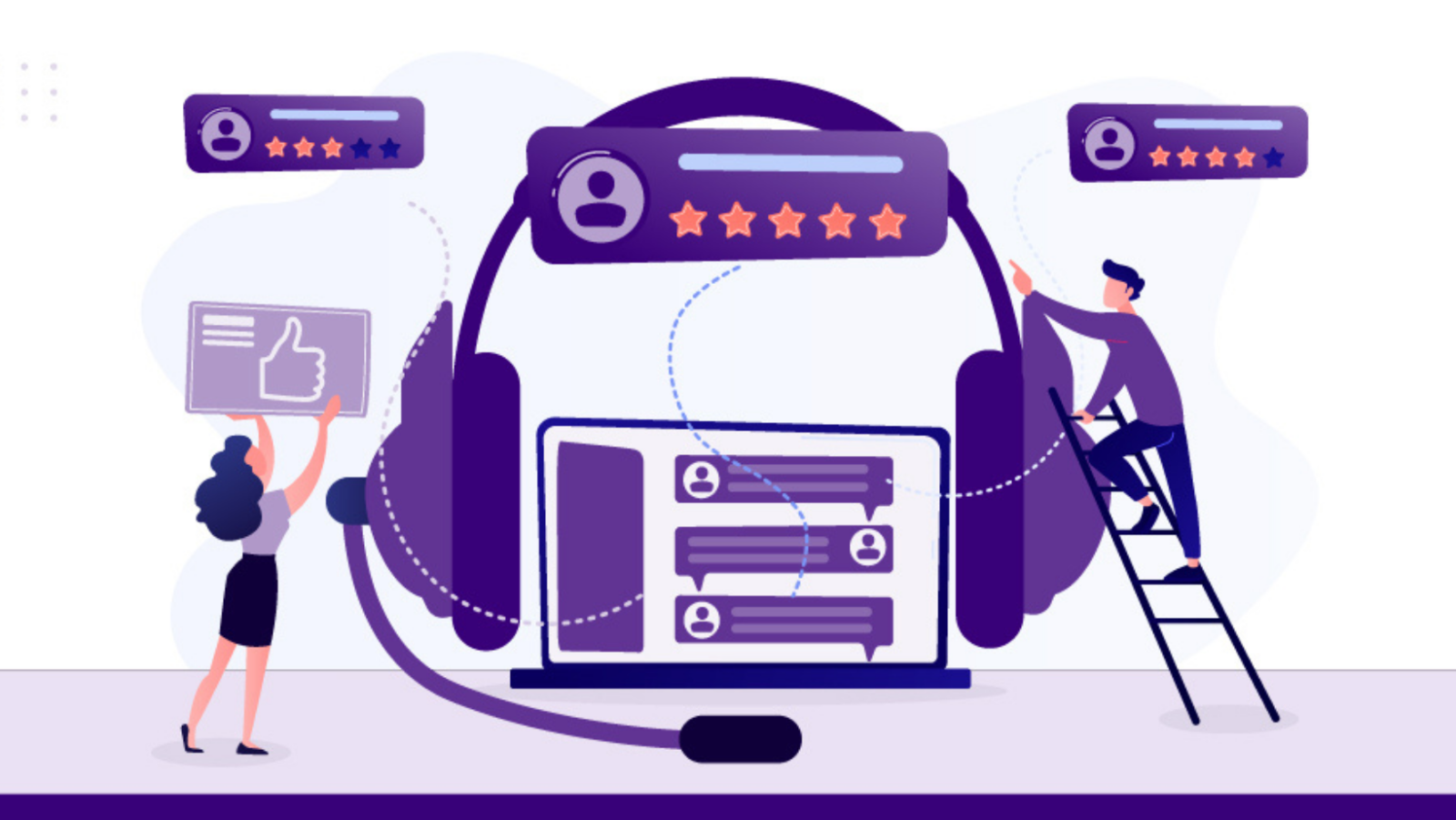Joel is a whiz with computers. When he was just…
Do you know that you can retain 89% of customers in your business by using omnichannel?
Due to the dynamic landscape, many customers switch between websites, social media, and physical stores. So, maintaining a seamless and harmonious customer experience across all the touchpoints can be challenging.
Hence, in this article, we’ll discuss how to improve your omnichannel customer engagement. Learn how to build a satisfied customer base and prepare to understand customers’ demands. Streamline their communication routes, win their trust and loyalty, and personalize their customer experience. So, let’s look at the steps to create an effective omnichannel strategy focusing on individual customers.
Table of Contents
ToggleWhat is Omnichannel Customer Experience?

Omnichannel is a strategy that mainly focuses on providing a seamless, unified customer experience across multiple online or offline channels. This includes websites, physical stores, mobile apps, email, social media, etc.
Omnichannel customer experience is one of the customer-centric strategies used by marketers. It is used to create a unified and personalized experience for customers, allowing them to reconnect with brands through various available channels without any disruptions while having conversations.
As per global market estimates, the world omnichannel markets are expected to grow by a CAGR of 15.4% by 2028. Hence, in this digital age, it has become a more essential method that can be used to meet customer needs and requirements. It helps you enhance customer loyalty and satisfaction and increase your brand reputation.
Why is Omnichannel Customer Experience Important?

The omnichannel is taking over the world due to its significant features, such as managing client orders, easy online returns, data, and reporting across a variety of sales channels. So here are some of the important aspects of omnichannel customer experience.
1. Improved Customer Satisfaction and Loyalty
The omnichannel experience provides businesses with a unified eye view of customer interactions and history across multiple channels. Based on these data, businesses can segment the target audience and offer a personalized customer experience.
Also, customers can get relevant recommendations and offers based on their choice, preference, or past search history. This brings consistency in messaging across all channels and makes customers feel valued, leading to customer loyalty. These activities also foster customer engagement with businesses.
2. Enhanced Brand Reputation
Customers are the assets of a company, and satisfied customers are more likely to spread positive word of mouth, generating organic growth. It helps to enhance your brand reputation and stand out in this cutthroat competition in the market. Where else, adopting new technology can have a competitive advantage by offering a seamless and personalized omnichannel experience to a customer.
3. Increased Sales and Revenue
Due to cross-channel engagement, you can easily reach out to your customers through various channels. And increasing customer retention rates by 5% can increase your profits by 25% to 95%.
4. Enhanced Employee Experience
The omnichannel helps streamline processes and collaborations across departments, which helps improve employee satisfaction. Also, it increases productivity or maintains sustainable growth for long-term business success by building strong relationships with customers.
Omnichannel Marketing vs. Omnichannel Customer Experience
Here are some differences between Omnichannel marketing and Omnichannel customer experience.
| Based on | Omnichannel marketing | Omnichannel customer experience |
| Focus | Primarily focus on promotional and communications strategies employed by a business across multiple channels. | Creates a seamless and consistent experience for customers across all communication channels they use. |
| Objectives | It aims to increase brand awareness, generate leads, drive sales, and improve conversion rates. | It aims to improve customer satisfaction, loyalty, brand reputation, and retention. |
| Components | Omnichannel marketing can be done through social media, email, search engines, physical stores, mobile apps, etc. | Omnichannel customer experience includes personalizing across channels, consistent branding, messaging, easy channel switching |
| Measure | Click-through rates, conversion rates, customer acquisition cost, return on investment | Customer satisfaction scores (CSAT, NPS), Churn rate, customer retention rates |
| Activities | Emphasize targeted messaging and promotions. | Focuses on customer-centric metrics. |
Tips For A Successful Omnichannel Customer Experience In 2024

As new technology surfaces and customer behaviors evolve, businesses should aim to boost sales, cultivate loyalty, and build lasting customer relationships.
Use these tips to find your way through the multichannel landscape in 2024.
1. Manage Digital Channels within the Contact Centre
Invest in an omnichannel contact center platform that can integrate with email, live chat, social media, and so on. It facilitates a seamless workflow and shares data. It also enhances collaborations among team members. Moreover, it helps team leaders monitor employee performance through tracking metrics for handling time, first-contact resolution rate, etc.
2. Look out for Consistent Support for Omnichannel Interactions
Establish one central base where it can be accessible for all agents to get connected. For instance, if your agents and clients are based in the UK, it is better to get a UK virtual phone number to connect with them. It’s because such numbers help create a local presence in a certain location, even if your business is not physically located there. It also lets you make phone calls at a lower cost than regular telephone lines.
3. Provide a Unified Agent Experience
Provide your agents with real-time data access, where they can have customer data and history all over the channels. Equipping your agent with reliable tools enables them to handle interaction in a unified interface. Hence, consider getting software with a Unified Callbox feature from a reliable provider like KrispCall.
Unified Callbox integrates all the telephony communication like phone calls, messages, call notes, and voicemails in a centralized location. As a result, agents don’t have to swipe between apps and tabs to view these details. They can easily get these details from a single window.
4. Look out for Cross-Channel Customer Context
Incorporating a cross-channel such as a Customer Data Platform (CDP) helps to unify the customer data from all channels and create a 360-degree view of each customer. It allows you to use features such as an automated greeting, chatbots, etc., which saves time and enhances the customer’s personalized experience.
5. Ensure a Seamless Move across Channels
You can implement Single Sign-On (SSO), which allows your customer to log in easily across all channels using the same credentials. Integrating the different channels helps prevent confusion and prevents customers from repeating themselves.
Conclusion
In conclusion, creating a perfect multichannel experience isn’t about managing many platforms. It’s more about connecting several steps that guide your customers toward their seamless journey with the business. So, prioritize your customers’ needs, optimize your platforms, and take advantage of your data for the best outcome.
You’ll see the best results from your multichannel strategy if you fill it with empathy, personal touches, and a constant desire for improvement. Use this guidance, blend it with your brand’s aesthetic, and see how your customers’ experience transforms.
FAQS
1. What Are The Customer Success Trends In 2024?
The customer success trends are listed below:
- Hyper-personalization and values
- Proactive customer success
- Integration of AI and automation
- Focus on employee experience
- Omnichannel customer experience
2. What Do You Think A Focus On The Customer Will Look Like For Companies In 2025?
In 2025, the customer focus can look like building a community, customer co-creation, ethical AI and data use, sustainability, and social responsibility.
3. Which Business Is Most Profitable?
To determine the most profitable business, you should consider many factors such as industry type, business model, market demand, management, and skillful execution.
Joel is a whiz with computers. When he was just a youngster, he hacked into the school's computer system and changed all of the grades. He got away with it too - until he was caught by the vice-principal! Joel loves being involved in charities. He volunteers his time at the local soup kitchen and helps out at animal shelters whenever he can. He's a kind-hearted soul who just wants to make the world a better place.






